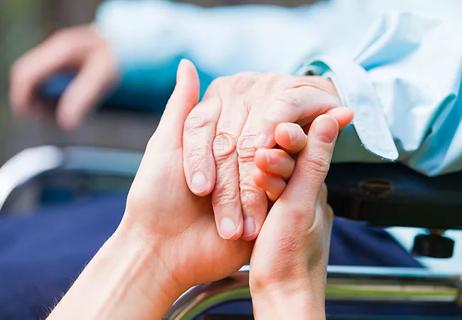Cultural differences, literacy rates hurt adherence

As the U.S. population ages and as more Americans live longer, there has been an uptick in patients using home-infusion pharmacy care for everything from pain medication to IV-antibiotics to intravenous nutrition. Home infusion offers patients and caregivers convenience but also requires patients’ to learn new skills.
Advertisement
Cleveland Clinic is a non-profit academic medical center. Advertising on our site helps support our mission. We do not endorse non-Cleveland Clinic products or services. Policy
Consult QD recently spoke with Eileen Hendrickson, RPh, Director of Pharmacy at the Center for Connected Care, about how Cleveland Clinic staff works to overcome a variety of challenges to make sure patients and caregivers can benefit from home infusion.
The single greatest is communication. We are teaching patients that are not clinicians to administer a medication through technical means, and it’s a skill that the average patient does not have. Declining literacy rates makes teaching patients technical skills more difficult; it is further complicated when patients or caregivers do not speak English as their primary language.
Yes, there are definitely challenges to adherence. We see this frequently with pediatric patients. Maybe the parents don’t have adequate support. They might be the sole parent in the home or there may be mental health issues or financial factors.
In pediatric cases related to intravenous nutrition therapy, for instance, the caregiver may become frustrated because it limits their lifestyle. They have to be home at certain times to hook up the infusion or there are things like IV pump arms that go off in the middle of the night or it may be a struggle to keep the supplies organized at home.
We try to use media they can access and understand. That could be pictograms, or if we’re training them in person, we give them the ability to touch and feel what a sample device looks like without actually connecting it to their loved ones. If they need to take a picture with their phone to remember what to do, that’s fine.
Advertisement
For patients where English is not their primary language, we work pretty extensively with the interpreter services. We have used it not just when clinicians need to speak to patients or caregivers but also when some of our support staff, particularly people organizing supply deliveries, need to speak to patients and caregivers.
They’re one of the primary ways we find there’s something wrong with adherence. If the supplies the patients or caregivers are asking for don’t match up with the medications they need, there is something wrong, a disconnect. Trying to use the language that the family’s really comfortable with also helps us build a trusting relationship with them.
We tell staff never to pass judgement. Otherwise we might lose that very tenuous relationship we’ve built with the caregivers. Initially nurses go into the home to teach patients or caregivers what to do, but nurses typically cannot go for every infusion so we have to stress that the patient or caregiver has to be an active participant.
Medicare doesn’t cover everything. That’s why some patients, may chose a skilled nursing facility or decide to go every day to an outpatient facility to receive therapy rather than have it at home.
We try very hard to provide clear information about the patient’s coverage prior to them starting with us. Nutrition patients may be with us for a very long time. Their insurance coverage may change over time. They may have been actively working and covered under a commercial plan and then become a Medicare patient. We want to make sure they’re informed about those changes.
Advertisement
In some cultures, it is expected that the male head of household is the principal contact. In those cases, we recognize that we have to start communications with that person, even if he is not the primary caregiver for the patient and develop trust with him so that we can then work directly with the primary caregiver. In general, we work with Global Patient Services as a way to enhance our caregivers’ understanding and ability to perceive cultural differences.
Advertisement
Advertisement

Essential prescribing tips for patients with sulfonamide allergies

OMT may be right for some with Graves’ eye disease

ATHOS-3 subgroup analyses reveal compelling benefits

Care improves quality of life

New developments

A review for primary care providers, geriatricians

Improving transparency and accountability in healthcare

Not if they meet at least one criterion for presumptive evidence of immunity